VEGA specializes in lower limb prosthetics, solving all the problems of patients who need prosthesis. We manufacture modular prostheses using modern medical technology. Our goal is to improve the quality of life of people who need orthopedic care.

- orthopedic care
- Special features
- Full leg splint with rigid immobilization of the knee and ankle joints
- Description
- How to choose a knee brace?
- How do I wear a knee orthosis correctly?
- Not sure about your choice?
- News
- When to use the product?
- Catalog
- Application of gypsum
- Where can it be bought?
- INPATIENT REHABILITATION:
- You might also be interested in:
- Customized orthoses
- Benefits of custom orthotics
- Description
- Indications for use:
- Rigid adjustable knee brace
- Knee braces: price
orthopedic care


A full leg brace is essential for lower limb injuries and fractures to fix the leg in a specific position.
The products completely or partially immobilize the injured leg by enclosing it in a special, size-adapted 'sarcophagus'.
Special features
– Individual adjustment of the bones of the lower extremity for fractures without ligament tears or for ligament reduction.
- Can be used both permanently and temporarily.
– Easy to perform hygienic treatment, wounds and irritation can be avoided.
– Better circulation in the leg than with a static plaster cast.
– The full leg orthosis can be used in several places after knee surgery or a broken leg.
– Thanks to the special materials from which it is made, it can be adapted to the individual anatomical features of the patient's body.
– Equipped with special removable plates that help regulate the load on the joint and train the knee.
The products are designed in such a way that they can be worn permanently or the patient can e.g. B. can be placed in an X-ray machine to immobilize the leg.
Full leg splint with rigid immobilization of the knee and ankle joints
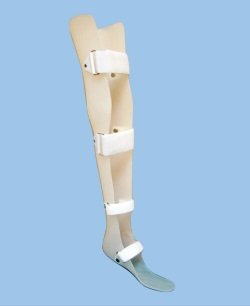
An orthosis that rigidly holds the leg in a specific position in inflammatory and degenerative diseases, paralysis and in rehabilitation after injuries.
The orthosis helps to reduce the load on the painful joint or distribute it evenly over the whole leg. Rehabilitation with a tunic shortens the recovery process many times over.
Price not available at retail
- Prospect Mira On request
- Zhukovsky On request
- Autozavodskaya On request
- Pervomayskaya On request
- South Western On request
- Lublino On order
- Online store on order
 To Moscow from 250 rubles*
To Moscow from 250 rubles*  Within Russia from 249*
Within Russia from 249*
- bar
Description
The tunic is made with two compound sleeves covering the foot, lower leg and thigh to the upper third of the thigh, from a domestic sheet of thermoplastic material (polyethylene - low density polyethylene, high density polyethylene, polypropylene), etc. by vacuum forming.
It is made from an individual plaster cast, which is issued under the supervision of an orthopedist. It serves to immobilize, correct and relieve pressure on the lower limbs.
- in inflammatory diseases,
- in paralysis of the sluggish and spastic lower limbs,
- with a tendency to flexion contractures in the knee joint and foot,
- for free consolidation of fractures and maljoints of the upper and middle tibia as well as the lower third of the thigh.
How to choose a knee brace?
The main functions of orthotics are.
- to ensure immobility of the knee joint;
- stabilization of the joint;
- Correction of the deformity that has arisen;
- consolidation of the results of the treatment carried out;
- reducing the load when walking;
- Prevention of injury and disease progression.
Orthoses are available in different designs and materials and are adapted to the size of the knee. In order to choose the right product, it is important to know what type of orthosis is suitable for the pathology in question and how to measure the knee for the orthosis. The size of the orthosis is determined by the circumference of the knee, which can be measured with a tape measure. The orthoses are equipped with elastic bands and adjustable straps so that the orthosis can be fixed as tightly as needed.
There are the following types of knee braces:
- short cotton knee brace;
- rigid knee brace;
- soft knee brace;
- Semi-rigid knee brace;
- Open and closed knee braces;
- Hinged knee braces.
These also differ depending on the manufacturer:
At the Yusupov Hospital, the patient is supported in understanding the different types of knee braces and choosing the most suitable one.
How do I wear a knee orthosis correctly?
The knee brace should be worn throughout the day and only removed at night. In demanding cases, it is advisable to wear the orthosis while you sleep. If a rigid orthosis is used, its positioning and the flexion angle of the joint are strictly determined by the doctor. Do not change the recommended settings yourself without the specialist's approval. If ointments or creams are to be applied to the knee, wait until they are fully absorbed before putting on the orthosis.
Care instructions for the product are usually included in the instructions for use or you can ask a consultant in an orthopedic specialist shop for advice. Care varies depending on the type of product and the material used.
A correct knee brace does not restrict you or your leg in movement. Pay attention to the quality of the material and the fastening. A good quality knee brace can be worn all day and is breathable under the brace. The fasteners do not pinch blood vessels and ensure a secure fit.
Not sure about your choice?
Our consultants will be happy to help you choose the right orthoses.
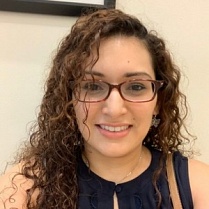
Maria Dmitrievna Lavrova
Medical education at the Burdenko State Medical University in Voronezh. NN Burdenko
Has been working with Orliman products since 2012, last training on Orliman products in 2018
'I like my job and the company I work for. The selection of orthopedic products gives me great pleasure'.

Ivannikova Arina Stanislavovna
Medical education at Russia's Pirogov National Research Medical University in 2010.
Has been working with Orliman products since 2017, last training with Orliman products in 2018
'My first year in this call center has been nothing but joy. I do my job with quality and responsibility.'
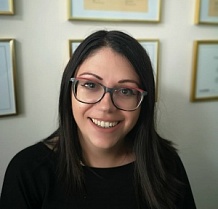
Ivanchenko Kristina Yaroslavovna
Medical education at the Izhevsk State Medical Academy in 2009.
Has been working with Orliman products since 2013, last training with Orliman products in 2018
'Great work that brings only joy. I don't regret becoming an orthotist. I really enjoy helping people!'

Alina Ivanovna Mironova
Medical education at Tver State Medical University in 2011.
News
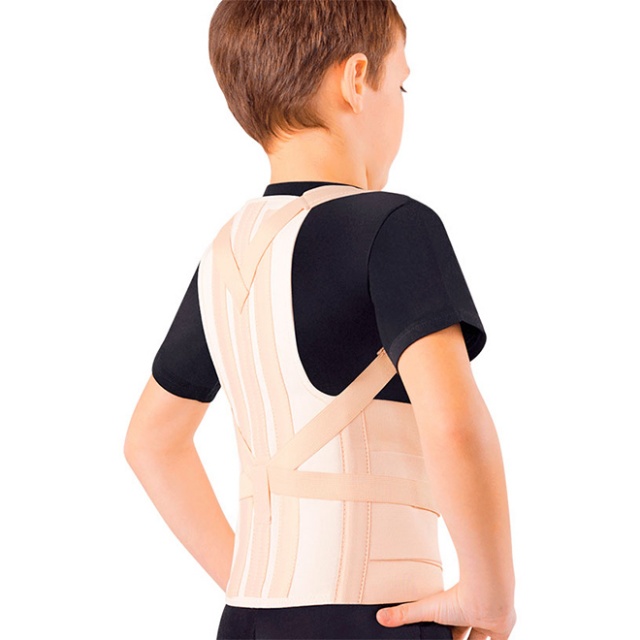
Lumbar and sacral braces for children - a product for the treatment of curvature.
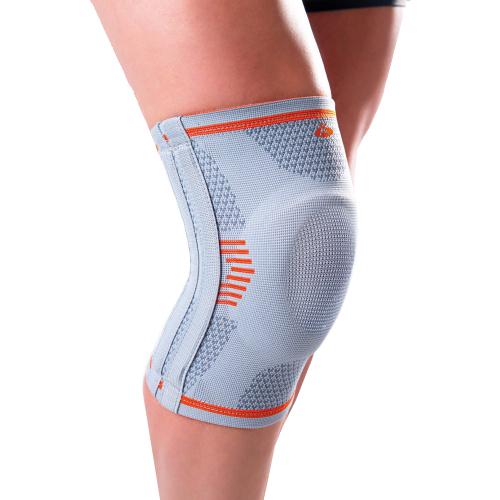
Learn how to keep your knee joints healthy.
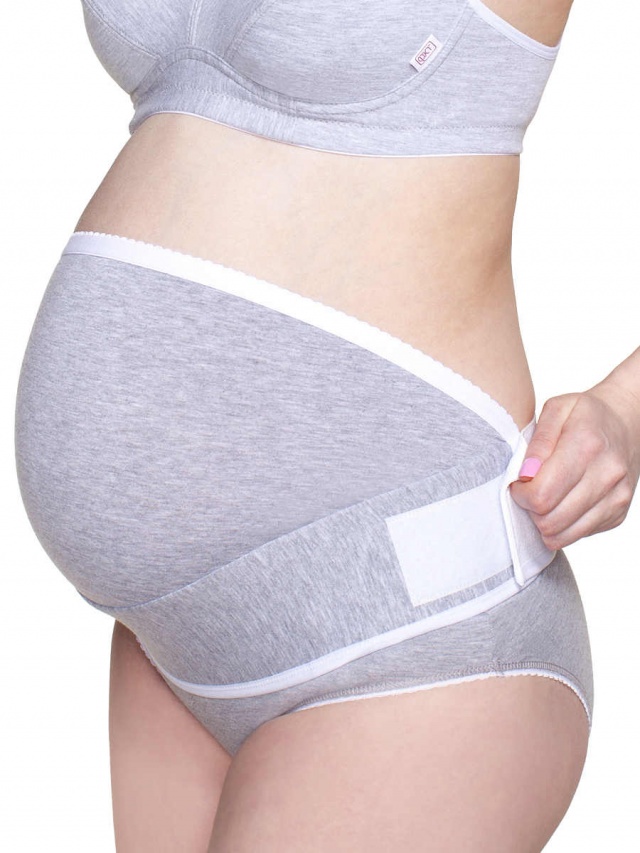
What models of prenatal bandages are there.
When to use the product?
Wearing an orthosis is an integral part of a rehabilitation period and the successful restoration of joint function. The product is custom made after a thorough examination of the injury.
Orthoses are used, among other things.
- as fixators for fractures, dislocations, bruises and sprains;
- to distribute the load on the painful area in the postoperative period;
- for pressure relief in osteochondrosis, radiculitis, arthritis, tunnel syndrome;
- in congenital and acquired anomalies of the musculoskeletal system – clubfoot, valgus foot deformity, paralysis of the muscles of the limbs, including cerebral palsy;
- for spinal fusion in disc herniation and other neurological defects;
- Spinal curvatures for posture correction.
Plastic orthoses are often used in conjunction with therapeutic exercises, adjusting the degree of adaptation of the device to the body as needed. Thermoplastic constructions are suitable for long-term wear as they allow the skin to breathe and eliminate allergic reactions. Please note, however, that the orthosis is a medical device and should only be used if prescribed by an orthopedist.
You can find out more about the properties of ORDEKT orthoses on our website. For clarification of order details or questions regarding tourniquets or other correction designs, please call 8.800.500.8333 or write a message in the feedback form.

This article was reviewed by Maxim A. Strakhov, MD, PhD, Associate Professor of Traumatology and Orthopedics and Military Field Surgery at NI. Pirogov Russian National Medical Research University, Professor of the Department of Traumatology and Orthopedics at the Federal State Medical and Biological Agency of the Russian Federation (Moscow).
Catalog
I was fortunate to be one of the first orthopedic surgeons to test ORDEKT. I readily agreed to the experiment, since foreign thermoplastic orthoses are practically unavailable in our country, and the ORDEKT orthoses do not differ in their characteristics. For a month we offered the patients of the (private) clinic the use of ORDEKT under favorable conditions. Immobilization procedures lasted up to eight minutes and caused minimal patient discomfort. In three cases, a conventional plaster cast could be successfully replaced by an ORDEKT plaster cast.
Added to this are the hygienic treatment, the easy carrying, the pleasant appearance…. The orthosis always retains its shape over a long period of time and fulfills its function perfectly. I hope that ORDEKT will prevail in orthopedic practice.
I broke my leg over the May bank holiday. I decided to get involved in the construction of my roof and regretted it. A cast on the OMC is not an option. I have many business appointments where it's wise to look neat. So I prepared myself to pay a sizable sum for plastic at a private clinic I know. I was told that imported orthoses can last more than a month, so I chose ORDEKT. It was also an inexpensive solution. They literally rolled onto my leg in minutes. As promised, the skin under the ORDEKT was not itchy and the material was firm. Most importantly, the leg with the ORDEKT fitted into most pants, so I got through the treatment time with little loss of nerves and money. I kept it presentable and was able to work at important times. Which would have been difficult without ORDEKT.
Over the winter I 'earned' a supracondylar fracture. I was originally put in a normal plaster cast. But my son who is a skier insisted on converting it to an ORDEKT cast…. I've never had a fracture, so I don't have anything to compare it to. But of course the simple cast I wore initially was heavy and uncomfortable. My hand was itchy underneath and it was a hassle to wrap it in foil before bathing. Then I got used to the plastic cast very quickly, sometimes I even forgot it was there. Putting on and taking off the ORDEKT seemed like an elementary matter to me. The recovery was much easier than I imagined with a regular cast. Thank you ORDECT!
Application of gypsum
– Prescribed for paralysis, muscle deformities, different leg lengths, cerebral palsy. The orthopedic aid varies in size, color, features and shape.
– Knee splints with different degrees of stiffening are used for fractures and injuries to the knee joint. They are prescribed for adults and children and used during the night or daytime sleep phase.
– Ankle and foot orthoses ensure recovery from torn ligaments and tendons.
– A derotation splint is recommended for bedridden patients after joint replacement. It is placed on the knee and covers the hip and lower leg to protect the joint from additional stress and injury.
– It helps treat sprains and subluxations, ligament injuries and muscle strains.
Due to the strong fixation, the mobility of the joint is limited to the maximum. A plastic splint is used for prevention and possible complications of cerebral palsy.
Where can it be bought?
You can choose and buy a night splint in our online store orliman-russia.ru. We will help you choose, organize your order, pack and deliver to your city for free. Delivery is free in all regions of Russia.
Our consultants will be happy to help you choose orthopedic products

Maria Dmitrievna Lavrova
Medical education at Voronezh State Medical University. NN Burdenko
Has been working with Orliman products since 2012, last training on Orliman products in 2018
'I like my job and the company I work for. The selection of orthopedic products gives me great pleasure!'.

Ivannikova Arina Stanislavovna
Medical education at Russia's Pirogov National Research Medical University in 2010.
Has been working with Orliman products since 2017, last training with Orliman products in 2018
'In my first year working in this call center I have experienced nothing but joy. I do my job in a qualitative and responsible way'.

Ivanchenko Kristina Yaroslavovna
Medical education at the Izhevsk State Medical Academy in 2009.
Has been working with Orliman products since 2013, last training in Orliman products in 2018
'Great work that brings only joy. I don't regret becoming an orthotist. I really enjoy helping people!'
INPATIENT REHABILITATION:
If required, we offer FREE inpatient rehabilitation at a specialist hospital as part of the MHI policy, including:

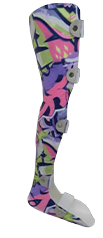
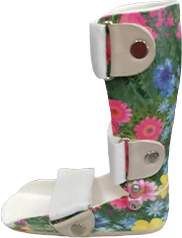

Text, graphics and photos on this website are protected by copyright.
These elements are copyrighted and original.
Any reproduction and use of these works without the permission of the author is PROHIBITED!
You might also be interested in:






Lower and upper limb prosthetics




Customized orthoses
The orthoses are made of polymeric materials that increase their functionality and durability. Modern orthoses are light, durable, waterproof and hygienic. They are suitable for each phase of the treatment of diseases of the musculoskeletal system (joint injuries, muscle injuries, spinal injuries, cerebral palsy, congenital injuries). In some cases, the use of orthotics can avoid surgery for certain congenital defects (eg, clubfoot).
Depending on your condition, you will be fitted with an orthosis that allows for light, medium or rigid immobilization. Complete immobilization of the entire limb or a limb segment can be achieved with an orthosis - the 'most rigid' non-articulating orthosis. Thanks to the variety of designs, the ideal prosthesis can be made for everyday life, for work or for active participation in sports.
Benefits of custom orthotics
– Customization for the patient, taking into account the anatomical features of the foot and the specific treatment needs;
– Precise adaptation to the size and anatomy of the patient's foot.
– Not noticeable to others.
– Supports the correct position of the foot when walking.
– Eliminates pain when walking.
– Prevents the effects of foot deformity and serves as a prophylactic against further aggravation of the deformity.
Description
The splint is a modern alternative to the plaster cast. With it, the load on the affected joint or the entire leg is significantly reduced and evenly distributed over the leg. Rehabilitation with the splint shortens the recovery process many times over.
The splint is in the form of a cuff covering the wrist, forearm and shoulder and is made of a sheet of thermoplastic material (polyethylene - low density polyethylene, high density polyethylene, polypropylene, etc.). vacuum formed parts and closures.
Made from an individual plaster cast and delivered under the supervision of an orthopaedist.
Indications for use:
- Spastic and flaccid paralysis, also as a result of cerebral palsy,
- muscle paralysis of the upper limbs to restore functional position,
- Immobilization of the elbow after surgery to avoid deformities,
- in inflammatory and degenerative diseases of the elbow joint,
- false joints of the forearm,
- Muscle paralysis of the forearm and wrist.
© 2022, PHARMA SI PLUS LLC, IRN: 7118504936, KP: 771501001, OGRN: 112715400560
Processing of personal data
Graduated from Saratov State Medical University in 1996. Graduated from Saratov State Medical University with a degree in medicine.
Graduated from Saratov State Medical University in 1996-1997 with a specialization in general medicine. Internship at the St. Petersburg Institute for Advanced Training of Specialists in Traumatology, Orthopedics and Prosthetics.
From 1997 to 2008 he worked as a traumatologist and orthopedic surgeon in Penza. – He worked as a traumatologist and orthopedist in the Penza Prosthetic and Orthopedic Company and since 2000 as head of the medical department of the company. He has repeatedly trained at leading companies in Russia and abroad.
Since 2008. – Works at OOO Orthopedic Industry Moscow Energia, trained in Germany, deals with complex and innovative orthoses.
2010-2012. – Head of Medi Rus Ltd Training and Rehabilitation Center Co-author of 6 scientific papers.
Rigid adjustable knee brace
The rigid knee brace enables maximum immobilisation of the knee joint. It is similar to a cast but is more comfortable to wear and does not cause muscle wasting. The rigid orthosis completely immobilizes the joint and can be used for torn ligaments, meniscus tears, knee fractures, during rehabilitation and after operations.
The knee brace is designed for long-term wear. It is also similar to a cast but allows the joint to move to maintain muscle tone. The knee joint orthosis is indicated for severe injuries, severe pain and in the postoperative phase. The articulated construction of the orthosis enables the best results when treating restricted mobility, swelling and obesity.
A variety of orthoses for the treatment and prevention of musculoskeletal disorders, including semi-rigid split-joint knee braces, the price of which depends on the quality of the materials, can be purchased at specialty pharmacies or online.
Knee braces: price
To purchase the product, contact a retailer that sells high quality knee braces. The price of the product varies from 1,500 to 4,000 rubles. This difference is due to the different types of orthoses, their composition, additional features and functions. A soft orthosis is cheaper, while an articulated orthosis is more expensive. The price of an articulated orthosis starts from 5,000 rubles. If patients want to buy an inexpensive knee brace, they need to be careful when choosing the product. An inferior orthosis made of non-permeable materials that do not support the anatomical position of the knee can lead to joint deterioration and become more expensive in the future.
Yusupov Hospital doctors can help you find an orthosis that combines the best price and quality criteria. A good orthosis is key to full knee recovery.
You can make an appointment with a trauma surgeon and other specialists, as well as information about the rehabilitation center and other questions, by calling the Yusupov Hospital.
Read more:- What are knee braces?.
- hip brace.
- Overnight orthosis for plantar fasciitis heel spurs.
- toe pads.
- What is an orthosis?.
- ribbons for children.
- What is a knee brace?.
- How to wear a knee brace for osteoarthritis.
